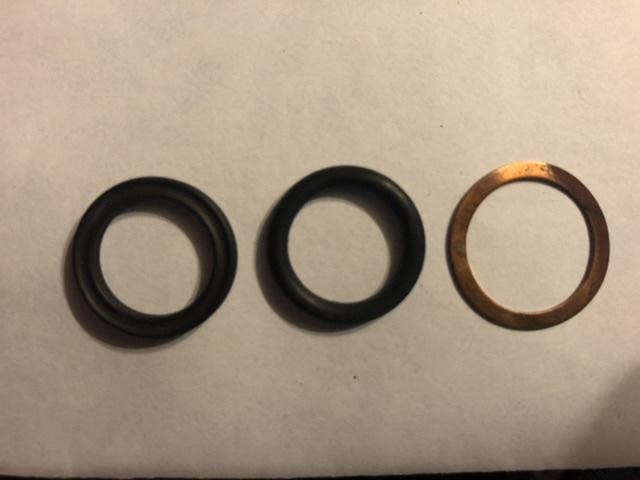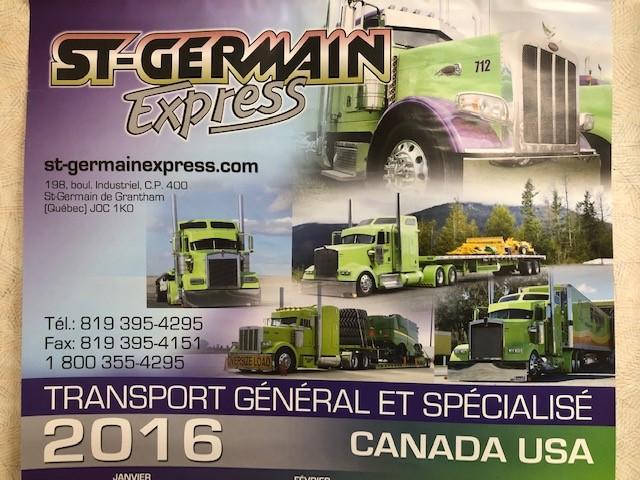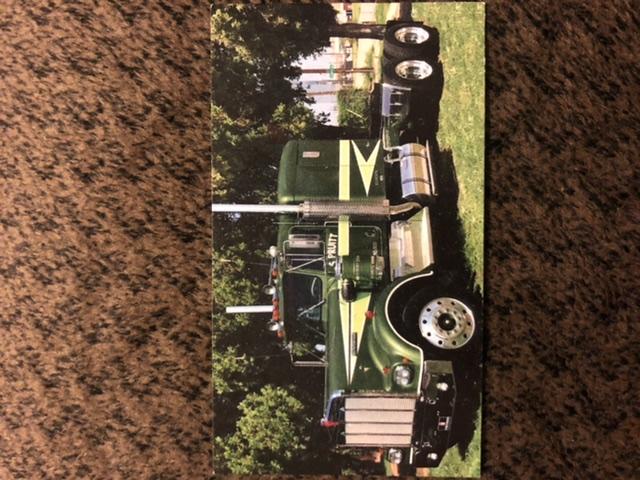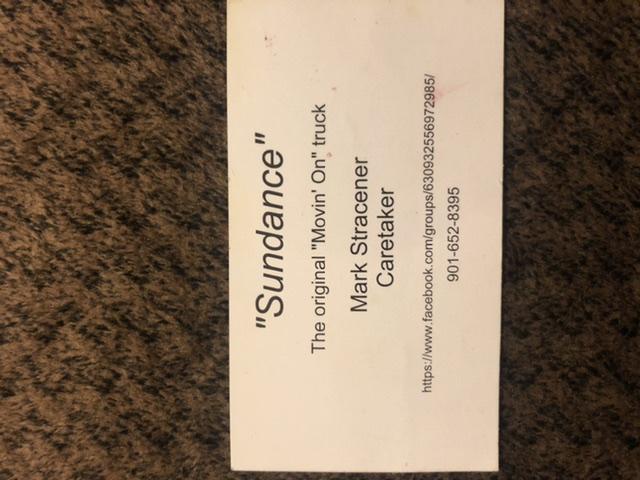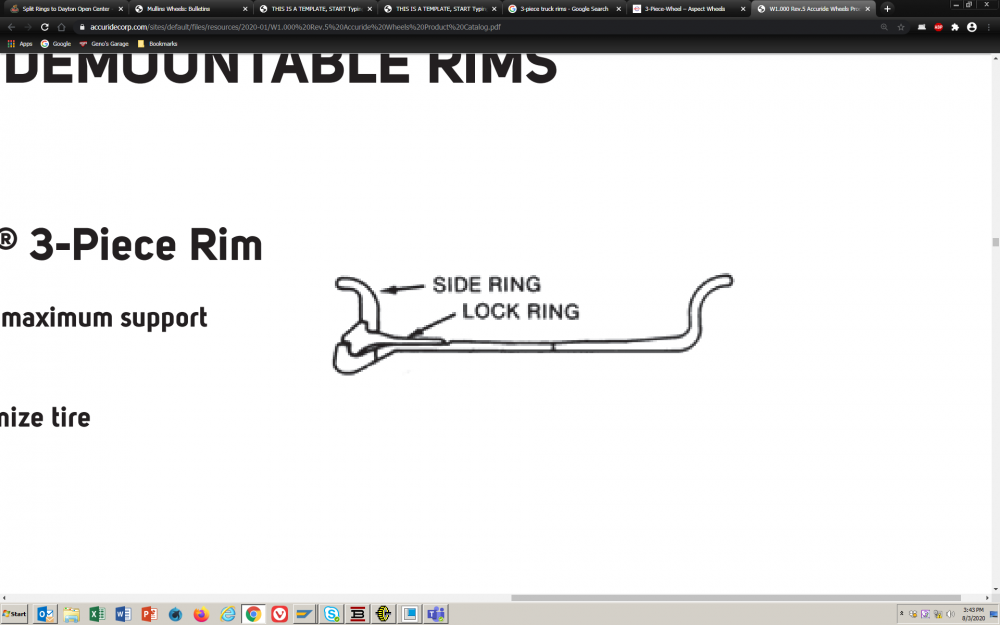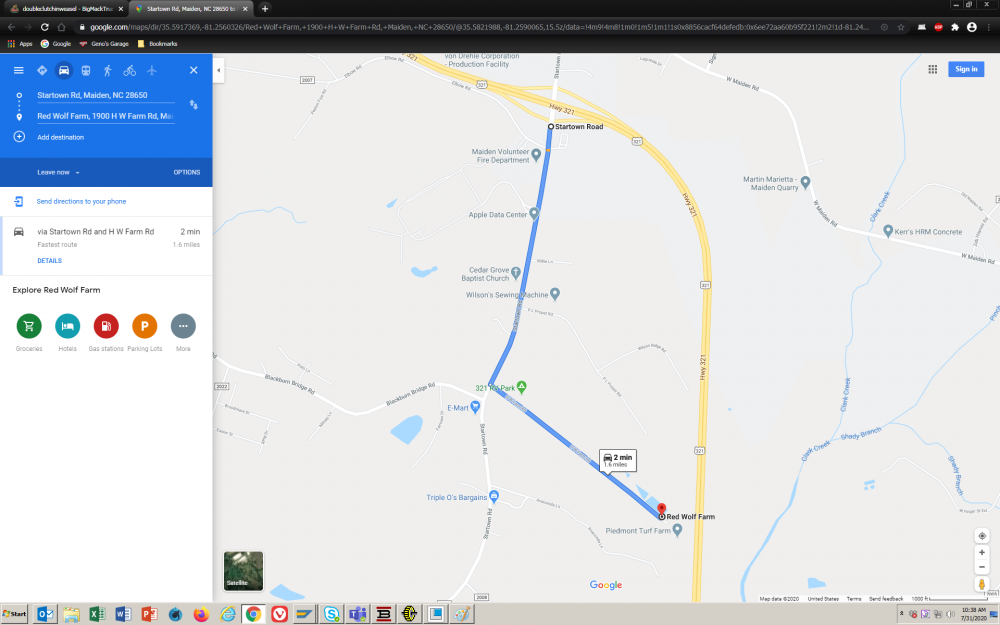-
Posts
2,624 -
Joined
-
Last visited
-
Days Won
37
Content Type
Profiles
Forums
Gallery
Events
Blogs
BMT Wiki
Collections
Store
Everything posted by doubleclutchinweasel
-
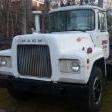
51 LJ Parts Needed
doubleclutchinweasel replied to Skidz's topic in Antique and Classic Mack Trucks General Discussion
Hey, Skidz. I can't help you with that, but just wanted to say "Welcome." I'm sure somebody will be able to steer you in the right direction. -
Never mind. I found it. It's just been a while.
-
Anybody remember how to edit the "signature" at the bottom of you posts? You know, the cool little sayings we put in automatically at the end of our rants.
-
Not sure if you ever got this fixed. Here are the seals I got for my old R. There’s a quad ring, an o-ring, and a copper washer. Got these from City Diesel in Knoxville, Tennessee. Was pretty easy to fix.
-

R-model cab resto report
doubleclutchinweasel replied to Vladislav's topic in Exterior, Cab, Accessories and Detailing
We had St-Germain move some equipment from Canada to here a few years back. One of the drivers gave me this calendar. It's a bit out of date, but I keep it up on the wall just so I can look at those "Slime Green Trucks", as you call them! -
Binford 4000 model!
-
Holy - - - -!
-
I ran this in the old R before I got the XPD. It actually does help lubricity a good bit. It actually ranked fairly high in the aforementioned study (see note below). 7)Super Tech Outboard 2-cycle TC-W3 engine oil Unconventional (Not ULSD compliant, may damage 2007 or newer systems) HFRR 474, 162 micron improvement 200:1 ratio 16.64 oz/tank $1.09/tank
-
There was a pretty good article out there somewhere about a study on the lubricity of the various fuel additives. Was fairly well done. It showed what additives worked, which ones didn't really help, and what additives actually made the lubricity worse. Here is one report on it, but not the one I was looking for: https://www.jatonkam35s.com/DeuceTechnicalManuals/Diesel_fuel_additive_test.pdf This looks like the same info: https://www.dieselplace.com/threads/lubricity-additive-study-results.177728/
-
Been following this one more for my info than for any other reason. Sounds like it got a little off-track! What JoeH said seems to make sense. Sounds like the hi-lo range shift isn't happening. Probably should look at the air valves and cylinders first. If the cylinder is moving but the fork isn't that might point to the fork moving on the rod. But it looks like that woul happen all the time, not just sometimes. Incidentally, I did pull the rear (auxiliary) section off a 15-speed while still in the truck to replace the hi-lo synchro assembly. It would downshift, but it would grind. On that one, I had to shift it between hi and lo several times when first starting up before taking off, just to get the hi-lo shift working. Afterwards, it would shift all day without trouble. But, if I started up in the morning, took off and shifted to hi, it would not go in the first time or two. Probably needed a slave valve. Not sure if the 8LL is the same setup. Oh, and that range shift slave valve only opened when the transmission was in neutral. So, there might be something preventing it from doing so. Be interested to hear what you finally find.
-
-
Still plenty of new demountable tubeless rims out there. Accuride is one of them. As I recall, 20" tube-type and 22.5" tubeless are interchangeable (small spider), and 22" tube-type and 24.5" tubeless are interchangeable (large spider). Somebody correct me if I remembered that wrong. I also had another tube-type rim on my truck. It was the 3-piece design (see below). Accuride still lists these. Had a solid (not split) outer rim. Press the outer rim down and put the split lock ring on. When the air built up, it pushed the solid outer rim over the split lock ring, squeezing it down, rather than pushing it out. A lot better than a 2-piece widowmaker, but still nowhere near as good as a 1-piece tubeless setup. I recall seeing that same 3-piece setup somewhere else with an o-ring to seal it up and use tubeless tires. Never had any experience with one though. https://www.accuridecorp.com/sites/default/files/resources/2020-01/W1.000 Rev.5 Accuride Wheels Product Catalog.pdf
-
I finally remembered his name: Mark Stracener I will try to get the rest of his info tonight. But, I figured I would put this out here while it was on my mind.
-
I couldn't let this go! Was just gonna "like" your post and move on. But... I have seen so many rides left to rot just the way you described. Answer always seemed to be the same: "I'm a-gonna fix 'er up one of these days." Then, you go by there every day for years and just watch them rot away. Finally, the wrecker comes and hauls them away for scrap metal when either the owner or the vehicle is dead. I kinda understand. We hate to let go of our toys. But, we have to be realistic about whether or not we have the wherewithal to do the project or not. Hard to let them go. The main reason I let my R go is because I got to a point where the work I needed to do wasn't something I could do myself or afford to pay someone else for. So, I sold it to a guy who wanted to put it back to work. Many years ago, I was living short-term in an apartment complex on the outskirts of Atlanta. There was a Mustang Shelby GT-500 KR convertible sitting there. The top was rotten, and the rain was starting to work on the interior and the floor boards. Had mushrooms growing in the carpet. Same deal. Had plans to fix-er-up "some day." Some day never comes for many folks. Right now I know where there is a good, solid B-61 that has been partially disassembled to put in a later engine and transmission. Has been like that for several years. Wish they would either put her back together or let somebody else have a go at it.
-
OMG! I dug up the card yesterday, and promptly forgot to put the name out here! Forgive a feeble-minded old-timer! I'll try to remember to post his info tonight.
-
I covered this in another post, but it might help to hit it again. The 20-speed is direct in 5th, and only has 1 overdrive gear (Hi-split 5th). The 18-speed is direct in 4th, so there are 2 available overdrive gears (Hi-split 4th and Hi-split 5th). You don't typically use Lo-Split 5th and Direct 5th, because they essentially duplicate Direct 4th and Hi-Split 4th. So, with these 2 gears left out, you get 18 speeds. Lo-Lo is normally only used to get started or for crawling. The sequence for using Lo-Lo and then upshifting could vary a little based on which exact gearset the box had. Regarding split-shifting, if you don't like moving both sticks simultaneously, you can "triple-clutch" it by shifting one box then the other. I had the best results upshifting whichever box needs to go up first, then downshifting the other. So, going up through the gears, I would typically upshift the main first (letting the RPM fall in-between) then downshift the compound (raising the RPM in between). When going down through the gears, I would upshift the compound first (letting the RPM fall in-between) then downshift the main (raising the RPM in between). Trying to downshift the main first required too much RPM rise. In other words, if you have enough RPM headroom to downshift the main box a whole step, then why the hell are you worrying about splitting the gear? Typical "heavy load" sequence on the 18-speed went like this (not using Lo-Lo unless needed): Lo-split 1st - Direct 1st - Hi-split 1st Lo-split 2nd - Direct 2nd - Hi-split 2nd Lo-split 3rd - Direct 3rd - Hi-split 3rd Lo-split 4th - Direct 4th - Hi-split 4th Hi-split 5th This gave 13 nice, progressive steps (sound like a familiar number?) The 13-speed Triplex was exactly the same pattern. On the 20-speed version, you would split each gear 3 ways, for a total of 15 steps. Same with the 15-speed Triplex. Typical "light load" sequence on the 18-speed went like this: Lo-split 1st Lo-split 2nd Lo-split 3rd Lo-split 4th - Direct 4th - Hi-split 4th Hi-split 5th Again, the same pattern works with the 13-speed Triplex. For the 15-speed Triplex, you could go all the way to 5th in Lo-split, then split-out 5th 3 ways. Of course, depending on road speed and load, it could change. Sometimes, instead of going from LS 4th to HS 3rd, I would go to Dir 3rd instead. That is downshifting 2/3 of a gear instead of 1/3. This let you pick up at a higher RPM, which really helped if the road speed was falling to rapidly. Otherwise, you might get into HS 3rd, realize the RPM is too low, and immediately have to drop to Dir 3rd anyway. To be honest, it was not that often that I had to use all the gears 0n the 18-speed. That light-load sequence worked on most things. The most common split-shift was when dropping down from LS 4th to either HS 3rd or the aforementioned Dir 3rd "skip". Sorry for the length! I don't know much about the modern trucks, but I cut my teeth on an 18-speed Quadruplex!
- 36 replies
-
- quadruplex
- 20 speed
-
(and 2 more)
Tagged with:
-

Peter-Mack
doubleclutchinweasel replied to doubleclutchinweasel's topic in Antique and Classic Mack Trucks General Discussion
Interesting read -
Do you know if they are still planning to have the Corbitt show in Henderson this fall?
-
Crap! I forgot to look up that guy's name last night. 'Course, that's just 1 of the things I forgot to do last night... He said he had been apprehensive about taking on that truck, but the support and encouragement he had gotten from the folks at the shows had been incredible. I guess that's what happens when you drive around in a piece of TV history. Hope we get to see him again this year.
-
During the show, it had 78,100 on it. Some of the later owners changed it...probably during restoration. Check out this website: http://movinontvshow.com/
BigMackTrucks.com
BigMackTrucks.com is a support forum for antique, classic and modern Mack Trucks! The forum is owned and maintained by Watt's Truck Center, Inc. an independent, full service Mack dealer. The forums are not affiliated with Mack Trucks, Inc.
Our Vendors and Advertisers
Thank you for your support!



